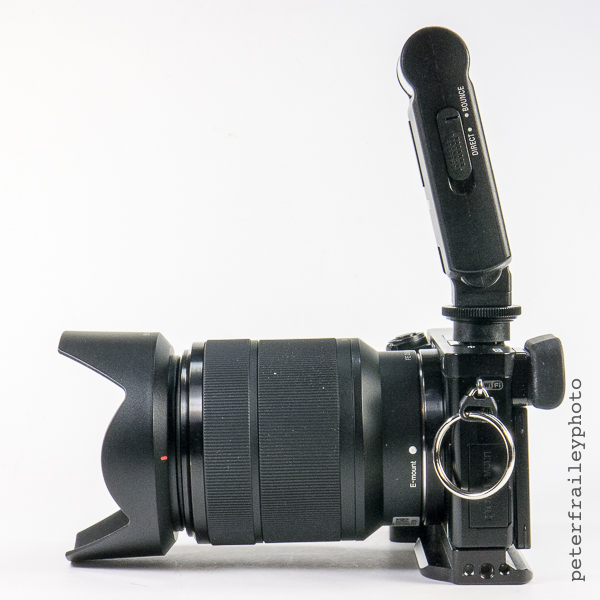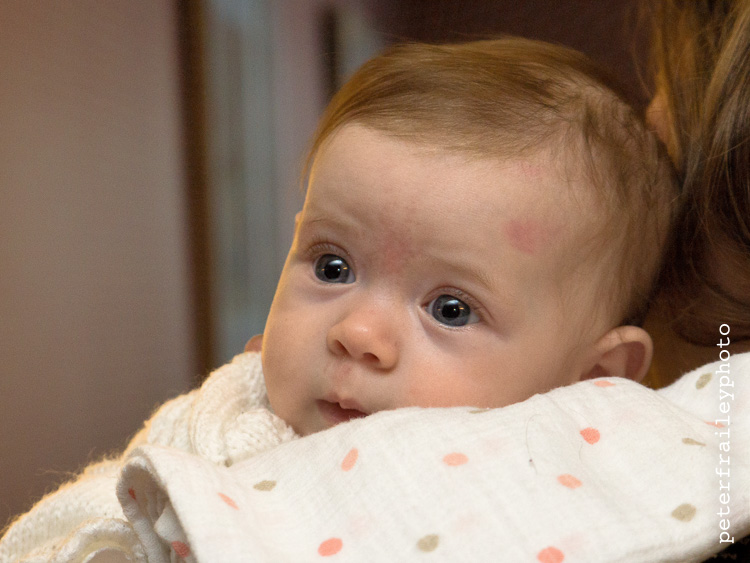I tried a new camera and lens combination at Christmas this year. I've had the Sony a6000 for two years, but the zoom I used on Christmas was a new addition to my Sony kit. It's the full frame FE mount 28-70mm F3.5-F5.6 kit lens. On eBay I bought it supposedly "used" for $250. If it had indeed been used it would be a surprise to me. It was pristine and the metal lens mount showed no scuffs or marks, which suggested to me that it had never been mounted on a camera. With an effective focal length of 43-105mm on the cropped a6000 sensor, it was the perfect thing for indoor family Christmas shots.
I have reported in previous posts about how much I like the Sony a6000 (and NEX 5R and, prior to the a6000, the NEX 6) for flash photography. This is because of the little Sony branded Guide No. 20 fold up/down TTL flash that is small and barely noticeable, but which bounces light nicely off the ceiling. (Unfortunately it does not swivel.) The model is HVL-F20M. It’s not very powerful, but that is fine with me as it is small and light and has enough juice coming out of the two AAA batteries to create a well balanced (with respect to lighting) image, as long as the ceiling isn’t too high.
 |
| Flash is folded down in "off" position. |
 |
| Flash flipped up to "on" position. Note slider for bounce versus direct. I have always only used the bounce position. This angle can not be adjusted. Camera is aimed to the left. |
The combo worked like this at Christmas:
Using M mode, I set the camera aperture to F3.5 (wide open when zoomed out to 28mm), and the shutter speed was set to 1/100s. Being a variable aperture zoom, as I zoomed in and out, the aperture varied between F3.5 and F5.6. I set the ISO to Auto. With the flash folded down in the “off” position, a typical ISO picked by the camera’s exposure meter was 3200. But flip up the flash to the “on” position and the ISO dropped in half. In other words, in this example, ISO dropped one stop to 1600. This cut the ambient light (i.e. light already in the room) in half and the flash “filled in” the missing half of light. This meant ambient light and flash was balanced in a 1:1 ratio. All I had to do was point and shoot.
In summary: In the above example, if I turn the flash “off” my exposure was 100% from ambient light and ISO 3200. If I turned the flash “on” my exposure was 50% from ambient light and 50% from flash at ISO 1600.
I love this simple approach taken by Sony in-camera software. Except perhaps to the most experienced photographer, the resulting images don’t look like a flash was used… at least in my opinion. Yet the flash brightens the subject by directing (bouncing) light onto the subject. This improves the overall quality of the light, while at the same time improving image quality by reducing the ISO from 3200 to 1600.
A few of my snapshots from Christmas are below. All were taken with a 1:1 balance between ambient light and flash.
 |









No comments:
Post a Comment